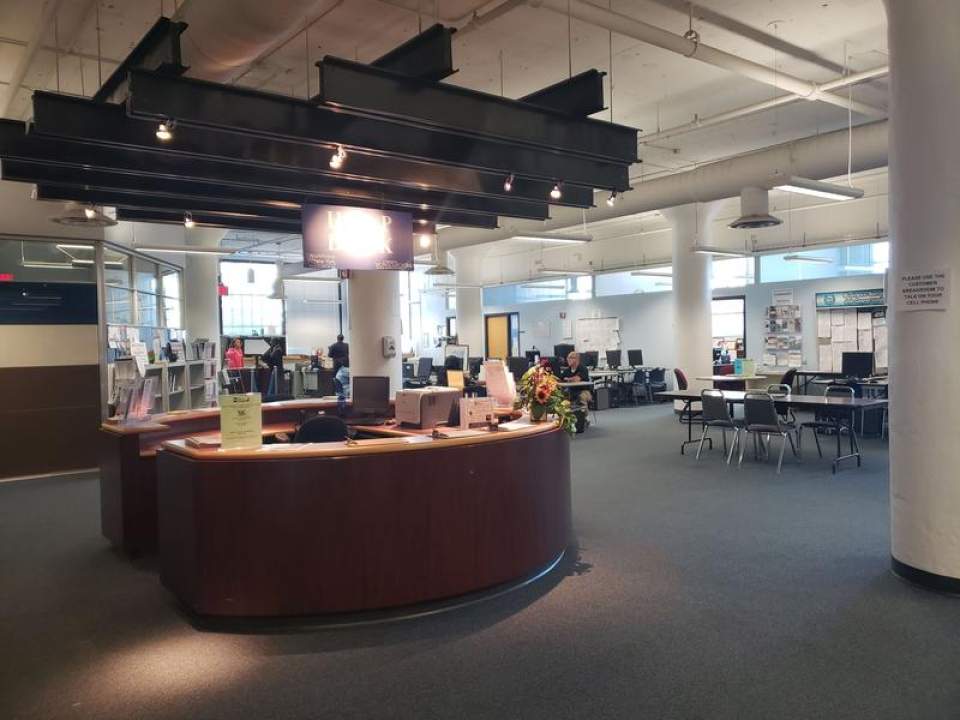News Take Action
WBFO News: "Employment racial disparity persists among minorities"
| Date: | October 22, 2018 |
| Share: |

"Things are looking good on the jobs front as unemployment rates have been on a national downswing. But, local experts say it’s not all good news. In Erie County, research shows, black and hispanic unemployment rates are higher than national averages.
It’s orientation day for a new crop of local job seekers, at the Buffalo Employment and Training Center. About a dozen men and women, sit studiously, at attention, taking notes, as their instructor walks them through all the amenities and services the center has to offer.
For, Jervonta Robins, this is a step in the right direction. Robins owns his own home on the east side of Buffalo, where he lives with his wife Bri.
He’s planning to make a career change from the health care field to truck driving. He says his journey in the workforce, has been challenging at times, as he navigates his way around issues like race and discrimination.
"My appearance is definitely intimidating," he said.
Robins has smooth caramel colored skin and thick dark brown locks of hair. He says assimilation, by cutting off his locks and changing his appearance, to become more appealing to those of an opposite race is not something he has considered.
"I have done it in the past, but at the end of the day I am, who I am," he said. "And, if you’re going to discriminate against me because of the way I look, then I don’t need to be working for your establishment regardless."
Right now, reports show national unemployment rates have reached its lowest levels in nearly 50 years. But, research shows, the gap between whites and minorities still persists.
Sam Magavern is with the Partnership for the Public Good. He says issues like racial bias, transportation, education, and residential segregation come into play when looking at racial disparities.
“Buffalo has unusually sharp racial disparities in employment. So, whether you’re looking at unemployment rates or wages, you’ll see bigger differences here than national averages," he said. "So, to give you an example nationally, for the last couple of decades black unemployment rates tended to run about twice as high as whites locally."
Magavern says, one cause for the disparity in unemployment rates between whites and minorities is residential segregation in Buffalo.
“So, one of the really striking statistics is, if you’re a person of color in this region, you have a two thirds chance of living in a high poverty neighborhood. So that, in itself, tells you so much, because there’s so many advantages to living in a prosperous neighborhood, compared to a high poverty neighborhood," he said.
"The air that you breathe is cleaner, the housing stock is better, there’s less violence and crime, there’s better stores, and there are more amenities, like quality daycare at hand. Your neighborhood network that might help you find a job, is going to be stronger, because more people around you have good jobs.”
Brenda McDuffie is with Buffalo Urban League she says creating accountability within the ranks of leadership holds the key to closing the racial gap
“I think we have to hold people accountable. It starts with leadership,” she said. “You’ve got to have companies, organizations, that have clearly articulated, that I am going to hold my managers and my organization accountable for bringing in people who may not look like the rest of us."
By the Numbers
37 percent of blacks and Hispanics in Buffalo live below the poverty line in Erie County
44 percent of people of color in Erie County are not participating in the workforce at all, compared to 35 percent whites
National unemployment average for blacks, between the years 2010 to 2014, is 16.1 percent and 11 percent for Hispanics. In Erie County, the unemployment rate for blacks, during this time period, is 17.3 percent and 13.6 percent for Hispanics."
(Source Working Toward Equality Employment and Race in Buffalo Partnership for the Public Good 2016)
Read the original article here.